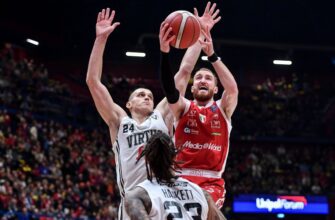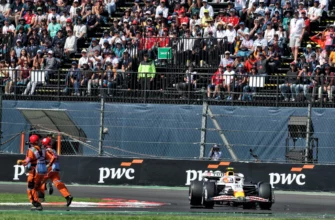In the high-stakes world of professional tennis, where fractions of a second and millimeters can dictate a match, every detail matters. Yet, a simmering discontent among players suggests that one crucial element – the very ground they play on – might be losing its distinct character. The latest volley in this ongoing debate comes from World No. 3 Alexander Zverev, whose candid remarks have stirred the pot, echoing sentiments previously voiced by none other than Roger Federer himself.
Zverev`s Acusation: A Call for Diversity
Following his debut at the Shanghai Masters 1000, Alexander Zverev didn`t hold back. “I hate when court speed is the same everywhere,” he declared, adding, “I know tournament directors are moving in this direction because they obviously want Sinner and Alcaraz to win every tournament.” It’s a bold accusation, painting a picture of a sport where uniformity might be prioritized over the rich tactical diversity that once defined it. In Zverev’s view, the golden age saw players adapting their game drastically from the baseline to the net, from the sliding on clay to the precise footwork on grass. Now, he suggests, one can play “almost the same way on every surface.”
Alexander Zverev during a recent match, sparking debate over court uniformity.
Echoes of Federer and the Shifting Landscape
Zverev isn`t an isolated voice in this wilderness of alleged sameness. His comments resonate with observations made by tennis legend Roger Federer on Andy Roddick`s podcast. Federer, a maestro of all surfaces, reportedly lamented the diminishing distinctions between grass, clay, and hard courts. This isn’t a new conversation, mind you; murmurs about court homogenization have persisted for years. However, coming from players of Zverev and Federer`s stature, it carries significant weight.
One might observe, with a touch of irony, that Zverev`s critique surfaces during a year where his own performance hasn`t quite matched the meteoric rise of the sport`s young titans. Currently, he finds himself closer to the 50th spot in the rankings than to the formidable second, which, to some cynical observers, might give his complaints a faint whiff of “sour grapes” – the classic tale of dissatisfaction when success remains just out of reach. Yet, regardless of timing, the core of his argument taps into a genuine concern about the evolution of the game.
Sinner’s Measured Response: Adapt and Overcome
When asked about Zverev`s remarks, Jannik Sinner, one of the very players Zverev implied was benefiting, offered a refreshingly pragmatic perspective:
“It`s not me and Carlos who make the courts. It`s not our decision. We try to adapt to every situation. I feel that every week the surface is a bit different anyway. I played great tennis even when the courts were faster. But I don`t make the courts, I just try to play the best tennis possible.”
Sinner’s response, devoid of rancor, highlights a professional athlete’s fundamental duty: to adapt. It also subtly suggests that while differences might be less pronounced than in decades past, they are far from non-existent. For players at the pinnacle of their game, adaptation is a given, a constant challenge irrespective of the court`s precise specifications.
The Calendar Conundrum and Player Agency
This debate over surfaces isn`t an island. It’s part of a broader conversation within the ATP Tour about player welfare and the structure of the sport. Novak Djokovic, ever the vocal advocate for players, recently chimed in from Shanghai on the issue of an overly crowded calendar. “Many complain, but no one does anything when needed,” he noted, a comment that could easily extend to the surface discussion. It highlights a recurring theme: players voice concerns, but tangible action from governing bodies often remains elusive.
Is Uniformity the Future, or a Folly?
So, why the shift towards more uniform surfaces? Tournament directors might argue that it broadens the appeal of tennis, making matches more consistently competitive across different events. A player who excels on hard courts can now, theoretically, perform well on “faster” clay or “slower” grass, leading to more consistent star power deep into tournaments. It reduces the need for hyper-specialization, a trait of eras past where certain players reigned supreme on one surface but struggled on others.
However, critics counter that this homogenization strips tennis of its tactical nuances and historical richness. The iconic clashes between serve-and-volley artists on lightning-fast grass and defensive baseliners on slow clay are slowly fading into memory. If every court plays similarly, does it truly test the full range of a player`s skill set, or merely favor those with the most potent baseline game and supreme athleticism?
As the debate continues to simmer, one thing is clear: the future of tennis, from the pace of the ball to the bounce of the court, is a constant work in progress. While Zverev’s comments may be tinged with personal frustration, they highlight a legitimate question about the balance between modern athleticism and the traditional diversity that once made professional tennis such a captivating spectacle.








